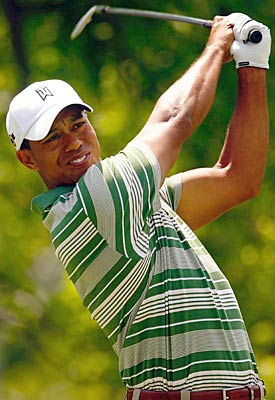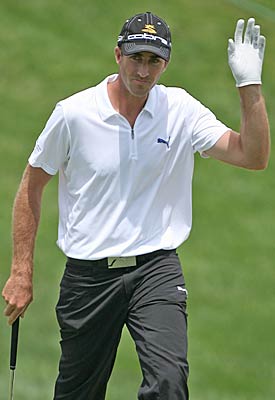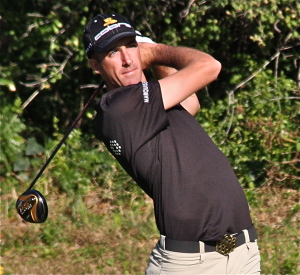When one comes to the quality of the bunkers and other hazards we pass into realm of much dispute and argument. Primarily bunkers should be sand bunkers purely, not composed of gravel, stones or dirt. Whether this or that bunker is well placed, has caused more intensely heated arguments outside of the realms of religion, than has ever been my lot to listen to. C.B. MACDONALD
Available via Amazon (US): Golf Architecture For Normal People
Barnes And Noble (online and in stores)
Bookshop.org option to support local independent bookstores.
Reviews:
"Golf Architecture for Normal People . . . should be required reading for those who are not ashamed to admit they know little about the subject, and for those who think they do . . . . Golf course architecture geeks have trouble slimming their thoughts down to bite-sized chunks, but Shackelford has achieved a remarkable success here." —Independent (Ireland)
"From the relative newcomer who’s slowly getting hooked to those that have played the game for most of their lives and think they know a thing or two, Golf Architecture for Normal People provides a solid and sober perspective that will help everyone recognize why some golf courses are worth playing more than once while a single trip around others is all you’re ever likely to want or need." —Links Magazine.
“It’s a wonderful book. An easy read that arrives just in time for your summer reading list. If you’ve never thought about how an appreciation for course design could heighten your enjoyment of the game, you must check this out.”—The Peterborough Examiner
"As in his prior publications, in his newest book Shackelford shows a deep appreciation for what can be done to create a golf course that appeals to the broadest possible golfing audience…Shackelford’s prose is succinct, often witty, and accessible."—Cape Gazette
"Author, blogger and golf architecture expert Geoff Shackelford, who helped Gil Hanse design Rustic Canyon and restore 2023 U.S. Open host Los Angeles Country Club, taps into his passion by creating a guide that helps every golfer understand the nuances of course design. Published by Tatra Press, the 164-page hardcover book is a must-read for every golfer to better understand the game they love." —Golf Pass
"Shackelford provides an informative picture [and]...sprinkles in history lessons about those who planted the game's architectural roots, defines common terms and helps you hone your eyes when it comes to identifying some of the tricks of the trade."—FORE Magazine
"This new book does a great job demystifying golf course design ideas for average players, but can also be a beneficial read fro PGA Professionals and other golf course employees to get a better understanding of their home courses." —PGA Magazine
"Geoff Ogilvy was stumped."
/"Similar to most"
/"I have to throw the whole set out for one club and I wouldn't mind if I thought it was going to make a difference."
/2009 PGA Championship Clippings: Final Round Whoa Nellie, Y.E. Yang Wins Edition
/They'll be slicing and dicing this one for a while.
From Tiger's post round take to Yang's dynamic personality to the gamesmanship to that silly rough around the greens to the CBS exec who insisted on showing us a Michael Vick clip as the leaders reached the terrifying 16th, the 91st PGA that was looking like a typical Tiger coronation turned into one for the ages.
Get ready to scroll and click...
"I'm able to get my ball count up"
/While Mark Wilson and Matt Bettencourt are leading the Memorial, the focus is on all of the big names rounding into form for the U.S. Open.
Bob Harig reports that Tiger shed some new light on his knee breakdown last year.
A year ago, Woods was among the few who knew that his season was in peril. He had hoped to play the Memorial Tournament following arthroscopic knee surgery just two days after the Masters, but he learned a week before this tournament in 2008 that he had suffered stress fractures in his left leg.
"I practiced way too hard to get ready for this event," he said. "That's when I broke it."
 Steve Elling says that Tiger's practices have been more limited than we originally thought:
Steve Elling says that Tiger's practices have been more limited than we originally thought:
Only in the past few weeks has Woods been able to bash balls as often as ever, because he didn't want to overstress the knee. He has only recently stopped icing the knee after rounds and instead has been able to adjourn to the range, where he can get post-round work done. Up until last month, he hadn't been able to practice after playing for two years because of his sore knee.
"I'm able to get my ball count up," he said.
Now maybe he can get his win count up, too.
Woods is gradually sneaking up on his standard form, having hit 35 of 42 fairways and 40 of 54 greens, which both rank in the top eight in the field. After starting the day tied for 24th, he moved up to a four-way tie for seventh in a group that includes Ernie Els.
 Elling also reports on Geoff Ogilvy's amazing 63 Saturday after his dreadful performance Friday.
Elling also reports on Geoff Ogilvy's amazing 63 Saturday after his dreadful performance Friday.
"Spend an hour taking out your aggression on a golf ball," he smiled. "It's quality alone time, Geoff time."
It might be Geoff time on Sunday night at this rate, when one Jack W. Nicklaus might be handing him a fat check and a shiny crystal trophy. Ogilvy, who won the U.S. Open three years ago, has already won the season-opener and match-play events, tying him with Zach Johnson and Phil Mickelson for most wins this season.
His results of late have been largely middling, though Friday skewed more toward largely maddening.
"I woke up on the wrong side of the bed," he said. "Everything was getting to me. One of those days."
He took the sour disposition to work, too.
"I don't like carrying on like I did at times yesterday," said Ogilvy, one of the brightest players on tour. "It must have looked silly."
"It's a pretty seamless kind of change."
/Looks like there was a new type of rally killer in Geoff Ogilvy's sitdown with what remains of the working press.
First, the rally...Geoff talking about the nuances of the Colonial course changes:
GEOFF OGILVY: Yes, it's actually quite nice that they've made some changes that you kind of keep looking at going, did they change that, did they not change that? It's a pretty seemless kind of change. Most of them I think is better, the course is better for it. A few extra bunkers here and there. The tees, a lot of them they look like they've just gone down a couple of feet which gives it a different look and probably makes it play a little longer in some respects because you are down a little bit. They cut the back of some of the greens, the ball is going to run away from a few more greens than it did before. All in all, pretty good changes. I would still like to see a couple of trees in a few places come out of this course. Apart from that, it's one of my favorites courses and probably nearly every guy in the field, if you polled them, it would be in their Top-5. And they haven't done anything to damage that by changing the course. A lot of times they change courses these days, that can happen. So fortunately that probably improved it. It's nice.
Q. Hi, Geoff, I'm doing interactive marketing for the tournament this week running the Twitter for the guys. I have a question from one of the followers. What part of your game is feeling best this week and what part of your game might not be feeling the best that you need to focus on to be successful this week?
The followers taking priority over the writers? Oh I smell an emergency meeting of the GWAA Directors! Wait, the new prez writes for the PGA Tour, maybe not!
Later on, Ogilvy on how the changes will impact play:
GEOFF OGILVY: In some cases for sure. I don't know if the fourth tee went back, but it feels like it's longer than it was. It definitely went down three or four feet. I think which makes it almost feel uphill. But that's always been a hard hole. The third is going to play a little trickier off the tee. It looks exactly the same, but the bunkers are 20 yards further to carry. They are not such an extreme carry, but our line has changed 20 yards from where it was the last 10 years. So getting it into your head you have to aim it 20 yards further right than you have been for the last eight or nine years is hard. You are used to teeing it up right next to the right-hand tee marker and hitting a driver in the normal spot, r the 3-wood in a normal spot. That line is now moved over and that's hard to get into your head. When you change a golf course subtlety like they have here, that we've played so many times. 12 is the same. 12 we've always blown it over the left bunker. Not many guys will be able to get it over there now. So it's hard to get it in your head you have to aim it up the fairway as opposed to aim it over the bunker. So it's more that sort of trickiness. The par-3, 13, I think it might actually be easier than it was before, even though it's 10 or 15 yards longer. 14, it's adjusting to the bunkers that are on the inside of the dogleg, not the outside of the dogleg. You are so used to stepping it up, autopilot, the normal spot, your driving lines are going to change on the 14th hole. It's more awkward changes like that, rather than out and out difficulty.
"I'm not capable of hitting a drive that goes straight for 270 yards then turns sharply to the left."
/ John Huggan visited Augusta National recently, watched Geoff Ogilvy bat it around in wet conditions, and talked to the Aussie about different aspects of the course. A few highlights:
John Huggan visited Augusta National recently, watched Geoff Ogilvy bat it around in wet conditions, and talked to the Aussie about different aspects of the course. A few highlights:
"Some spots look bad at Augusta, but only when you are actually there do you realise that they may not be quite so awful," contends Ogilvy. "That's the genius of the greens. Certain spots look wrong but are actually right. And on every hole there is a spot off the green that is better than a bad spot on the green.
"Professionals spend their whole lives trying not to 'short side' themselves with their approach shots. But, at Augusta, that is sometimes the thing to do. Take the par-3 6th. If the hole is cut on the top tier to the back right, you are much better off missing on that side. Just off the green to the right is way better than on the green but down the bottom of the slope. The 7th green is similar. If the pin is on the left side, you are better to miss the green on that side than be on the green and right of the cup. You can easily putt off the green from there. And the 8th is the same. If the pin is back and left, missing the green long and left is a good spot to be in."
This obviously explains how No. 13's lengthening has changed the dynamics there.
The problem is that moving the tee back has almost eliminated the possibility of going sensibly for the green in two shots.
As Ogilvy said: "I'm not capable of hitting a drive that goes straight for 270 yards then turns sharply to the left."
"Tiger shot 18-under at Augusta, everyone was pretty happy with that. That started the problem, didn't it."
/"It has been a long time since a premium player excelled at both games."
/"Your central nervous system enjoys change"
/David Dusek talks to Geoff Ogilvy about changing putters, just as Bobby Jones suggests in today's quote (above...until I take it down). And you thought some of us Geoff's who would like to see a minor distance rollback aren't also passionate advocates of consumerism?
"Your central nervous system enjoys change," he told me. "The new putter theory is not BS, that's a fact and it works for everyone. So sometimes if my putting feels a bit flat, I'll change putters, but it's not like I'm completely changing putters. I just want to look at something new, something fresh. People might think you are just trying to escape all the bad karma in your other putter, but your brain likes change and it gets you excited about putting again."
"So you feel for Jack a little bit because you're not allowed to do it any more."
/I thought Geoff Ogilvy was kind (and insightful) on the subject of what appears to be another Jack Nicklaus design players don't care for. Geoff's typically original analysis:
Q. Tiger earlier in the week said these greens were quite severe. What's the difference between big curvaceous greens like these and big curvy greens like at Augusta National?
GEOFF OGILVY: The greens at Augusta look like they're supposed to -- they look like -- they look right. Most of them are built on the hill that they're on, their natural looking slopes, it doesn't look like people moved too much dirt to make those greens.
These ones look a little contrived. And they're a bit -- Augusta has the bigger sweeping kind of more natural looking hills. These ones have a few little steep things and such.
(Laughter.)
But it's probably almost genius greens. I mean, all the best golf courses in the world have really slopey greens. So you can see what he's trying to do. Greens are getting too flat probably because greens are getting too fast. You couldn't design Augusta right now, every player would walk off if we walked into Augusta the first time we had ever seen it, played a brand new golf course, we would all quit after nine holes. We would all say, "I can't play this, it's ridiculous."
So you feel for Jack a little bit because you're not allowed to do it any more. But they look -- I don't mind big slopes. I just don't -- they just don't look as natural as Oakmont or Saint Andrews or Augusta like the truly natural slopey ones.
So he's really saying that an architect can still pull off big, sloping greens if the contours are built properly.
Now, the three courses cited by Ogilvy all had one thing in common at the time of their creation: they were not constrained by USGA spec greens. Augusta has since gone to USGA greens and according to the people I trust who played them before and after, have lost a great deal of their character in the way of neat little bumps and rolls.
Not that this is a legitimate defense of poor green design, but it is something to keep in mind as the players pile on The Ritz Carlton Golf Club at Dove Mountain. (And if they were lukewarm while at the tournament, it only gets worse when they get off property! Playing PGA National this week won't help.)
Ogilvy Over The Final 36
/
But all credit needs to be given to the prodigiously gifted Ogilvy, who had no bogeys and was 12 under for the holes played, a marvellous feat at the end of such a draining tournament.
From Helen Ross at PGATour.com:
Over Ogilvy's last 56 holes, the numbers were even more eye-popping with 22 birdies, two eagles and just one bogey. He mowed down Kevin Sutherland, Shingo Katayama, Camilo Villegas, Rory McIlroy, Stewart Cink and Casey as he ran his record to 17-2.
And PGATour.com breaks all of the numbers down here, including the scorecard.
Ogilvy Vows To Keep Shaving Until He Loses
/ Sporting a clean shaven face to the delight of the PGA Tour Fines and Overall Appearance staff which tired of writing Kapalua-week emails to the Australian, Geoff Ogilvy polished off the impressive but grooming-challenged Rory McIlroy in the morning's fourth round, then knocked off pace-of-play outlier Stewart Cink in the afternoon semi-final to setup a Sunday showdown with Paul Casey.
Sporting a clean shaven face to the delight of the PGA Tour Fines and Overall Appearance staff which tired of writing Kapalua-week emails to the Australian, Geoff Ogilvy polished off the impressive but grooming-challenged Rory McIlroy in the morning's fourth round, then knocked off pace-of-play outlier Stewart Cink in the afternoon semi-final to setup a Sunday showdown with Paul Casey.
Doug Ferguson on the rather astounding match play records of both finalists:
A tournament that no longer has Tiger Woods instead has the best two golfers in match play over the last three years.
Ogilvy is 17-2 in match play dating to his 2006 victory at the Accenture Match Play Championship, the final year it was held at La Costa. That includes a singles victory in the Presidents Cup.
Casey is 16-3-1 in match play around the world, including his 2006 victory at the HSBC World Match Play Championship at Wentworth, when he never trailed over the final 71 holes of that event.











